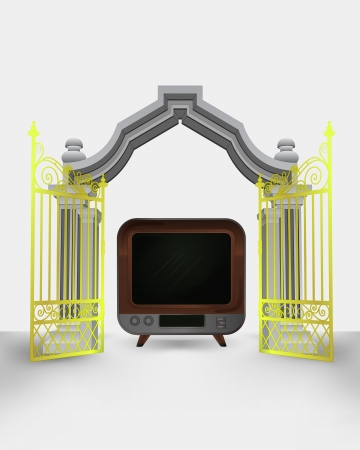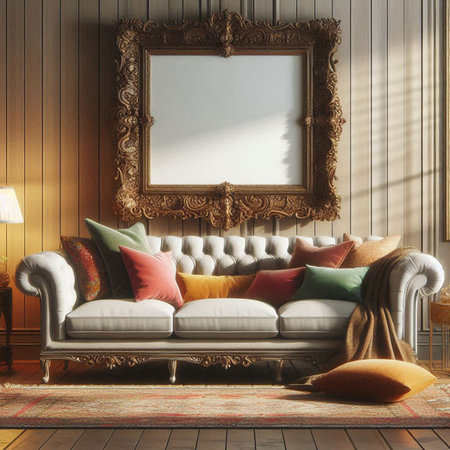Celebrating Heritage: The Value of Historical Features
In the landscape of modern British homes, the presence of original architectural features is more than a matter of visual appeal—it is a nod to centuries of cultural identity and craftsmanship. Elements such as ornate cornicing, elegant fireplaces, and distinctive sash windows are not merely decorative flourishes; they are tangible links to Britain’s storied architectural past. These features were often created with painstaking attention to detail, reflecting the values, artistry, and technologies of their respective eras. Today, homeowners across the UK cherish these elements for their ability to evoke a sense of history and continuity within contemporary living spaces. Retaining and showcasing such details is seen as an act of celebrating heritage, allowing each home to tell its own unique story while contributing to the wider narrative of British architectural evolution. Whether in a Georgian townhouse or a Victorian terrace, these historic features continue to shape both the character of individual homes and the collective identity of neighbourhoods, embodying the layered richness of Britain’s built environment.
2. Blending Old and New: Design Approaches
The British approach to integrating historic elements into modern homes is rooted in an appreciation for heritage and craftsmanship, balanced by a flair for contemporary living. Popular design philosophies revolve around the idea of “layering”—combining period features with sleek, modern touches to create spaces that feel both lived-in and fresh. This fusion is not about strict preservation or complete reinvention, but rather about harmonising the character of the past with present-day needs.
For instance, exposed brickwork is a celebrated feature in many renovated Victorian terraces and converted warehouses across cities like London and Manchester. Retaining these original bricks adds texture and warmth, creating a tactile backdrop against minimalist furnishings or vibrant artwork. Similarly, parquet flooring—often salvaged from older properties or laid anew using traditional herringbone patterns—injects a sense of history underfoot while working seamlessly with open-plan layouts and modern lighting.
Statement mouldings, such as ornate cornices and ceiling roses, are another quintessentially British element often incorporated into updated interiors. Designers frequently highlight these details by painting them in contrasting colours or pairing them with bold wallpapers—a subtle nod to Georgian or Edwardian grandeur within a contemporary context. The table below illustrates how some of these elements can be blended effectively:
| Historic Element | Modern Pairing | Design Impact |
|---|---|---|
| Exposed Brickwork | Sleek cabinetry, industrial lighting | Adds warmth & urban edge |
| Parquet Flooring | Open-plan layout, neutral palette | Grounds space with tradition |
| Statement Mouldings | Bold paint, contemporary art | Celebrates period detailing |
This thoughtful blending is at the heart of many British renovation projects, where respect for the past coexists with a desire for comfort and practicality. By carefully selecting which historical features to restore or replicate—and which modern elements to introduce—homeowners create spaces that are unmistakably British yet perfectly suited to 21st-century life.

3. Adaptive Reuse: Upcycling and Repurposing
One of the most evocative ways to integrate historic elements into modern British homes is through the adaptive reuse of reclaimed materials and upcycled antiques. Rather than simply replicating period styles, homeowners are increasingly seeking out genuine pieces—Victorian tiles, Georgian doors, Edwardian fireplaces—that bring with them layers of history and a unique sense of character. This approach not only preserves fragments of the past but also champions sustainability, reducing waste by giving new life to items that might otherwise be discarded.
The British market for salvaged architectural elements is both thriving and distinctly local in flavour. Specialist reclamation yards across the UK—from London’s renowned Lassco to regional favourites in Bath or York—offer treasure troves of heritage pieces. These establishments are more than mere shops; they serve as cultural archives, preserving artefacts that reflect Britain’s rich architectural tapestry. The popularity of Victorian encaustic floor tiles, for instance, lies not only in their ornate beauty but also in their capacity to connect a contemporary kitchen or hallway with the grandeur of 19th-century design.
Upcycling goes beyond aesthetics; it often involves creative craftsmanship. Antique timber beams might be fashioned into striking dining tables, or an old church pew could become a statement bench in a modern hallway. Such interventions foster a dialogue between past and present, celebrating patina and imperfection as markers of authenticity. For many British homeowners, these practices are about more than decoration—they’re about storytelling and stewardship, ensuring that fragments of national heritage remain part of everyday life.
4. Colour Strategies: Traditional Palettes with a Modern Twist
When integrating historic elements into modern British homes, colour plays a pivotal role in bridging past and present. Classic British colour palettes—such as the muted, heritage tones made famous by Farrow & Ball—evoke a sense of timelessness, referencing country estates, Victorian terraces, and Georgian townhouses. These subtle hues, from Stiffkey Blue to Cornforth White, provide a refined backdrop for both original features and contemporary interventions.
To prevent period schemes from feeling too sombre or dated, many British homeowners now enliven these traditional palettes with unexpected pops of modern colour. For example, a sitting room might feature walls painted in pale grey-green (inspired by Regency parlours), offset by a velvet mustard sofa or vibrant artwork. The interplay between historic restraint and contemporary vibrancy creates interiors that feel both rooted and fresh.
Below is an analysis of how classic and modern hues can be thoughtfully combined in different rooms:
| Room | Classic Palette | Modern Accent | Effect |
|---|---|---|---|
| Living Room | Dove Grey, Off-White | Cobalt Blue Cushions | Sophisticated yet playful energy |
| Kitchen | Sage Green Cabinets | Copper Pendant Lighting | Warmth with industrial edge |
| Bedroom | Pale Pink Walls | Emerald Green Throws | Romantic with a bold twist |
This approach mirrors the wider British tendency to balance respect for tradition with an appetite for reinvention. By experimenting with colour contrasts—pairing time-honoured shades with lively, unexpected tones—homeowners can honour their property’s heritage while ensuring it feels relevant to contemporary life.
5. Respecting Building Regulations and Conservation
When integrating historic elements into modern British homes, one cannot overlook the intricate web of planning laws and conservation requirements that govern heritage properties. The UK boasts a robust framework designed to protect the architectural legacy of its towns and countryside, ensuring that any modifications remain sympathetic to their historic context.
Understanding Planning Law and Listed Building Consent
In Britain, the planning system is underpinned by both national legislation and local authority policies, which collectively guide homeowners in making changes to their properties. For homes that are “listed”—a designation for buildings of special architectural or historic interest—any alterations, extensions, or even repairs may require Listed Building Consent in addition to regular planning permission. This process ensures that key historic features, from original sash windows to decorative cornices, are preserved for future generations.
Navigating the Consent Process
Securing Listed Building Consent can be complex but is essential for lawful renovation. Homeowners must provide detailed plans that demonstrate respect for the building’s character, often including heritage statements and method statements explaining how proposed works will minimise harm. Local Conservation Officers work closely with applicants to find solutions that balance modern living needs with preservation priorities.
Adapting Features Sympathetically
The goal is not simply to freeze a property in time but to adapt it sensitively. This could mean using traditional materials and techniques when repairing period details or ensuring new interventions are clearly distinguishable yet harmonious with the existing fabric. For example, adding energy-efficient glazing might be permitted if it doesn’t compromise the appearance of original window frames.
Practical Advice for Homeowners
If you’re considering integrating historic elements into your home, start by consulting your local planning authority and engaging with experienced conservation professionals. Retain as much of the original structure as possible and consider reversible interventions where feasible. By respecting both the letter and spirit of conservation law, you can create a home that honours its past while embracing contemporary comfort.
Local Artisans and British Craftsmanship
The renewed appreciation for traditional British trades has brought local artisans to the forefront of home restoration and modernisation. Stonemasonry, bespoke cabinetry, and other heritage crafts are experiencing a renaissance as homeowners seek to integrate authentic historic elements into their living spaces. These time-honoured skills, passed down through generations, are essential for preserving the character and structural integrity of Britain’s architectural legacy.
Reviving Traditional Trades
Across the UK, there is a growing recognition of the value that skilled craftsmen bring to both the preservation and adaptation of period properties. Local stonemasons, joiners, and metalworkers possess an intimate understanding of regional materials and construction techniques, allowing them to sympathetically repair and enhance original features—from intricately carved fireplaces to ornate cornices—while ensuring compliance with modern standards.
Bespoke Solutions for Modern Living
Integrating historic elements does not mean forsaking contemporary comfort or utility. British cabinetmakers and carpenters specialise in creating custom pieces—such as fitted wardrobes or kitchen units—that echo traditional designs but cater to present-day needs. This blend of old and new is at the heart of what makes a modern British home unique: it’s about celebrating heritage while embracing innovation.
Sustaining Heritage Through Collaboration
Working with local artisans fosters a sense of continuity between past and present, supporting small businesses and safeguarding rare skills for future generations. By involving these craftsmen in renovation projects, homeowners not only ensure authenticity but also contribute to the ongoing story of British craftsmanship—one that honours history while shaping tomorrow’s built environment.


